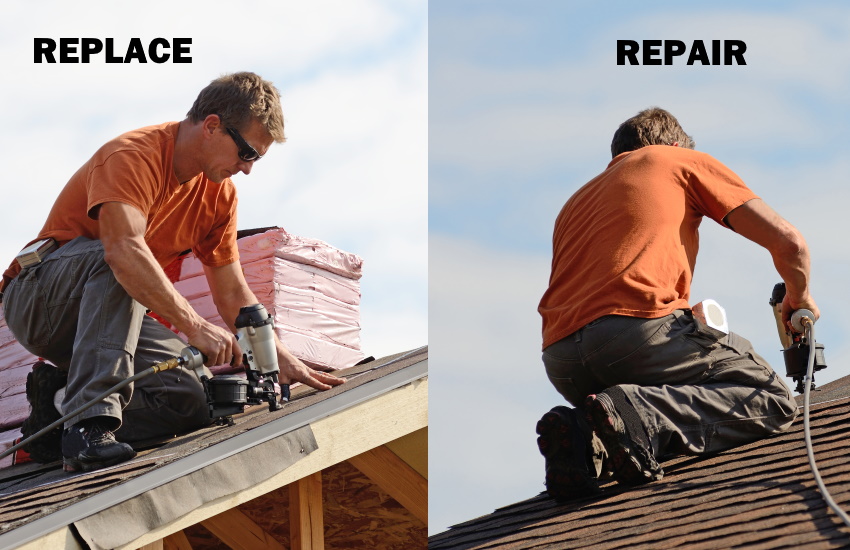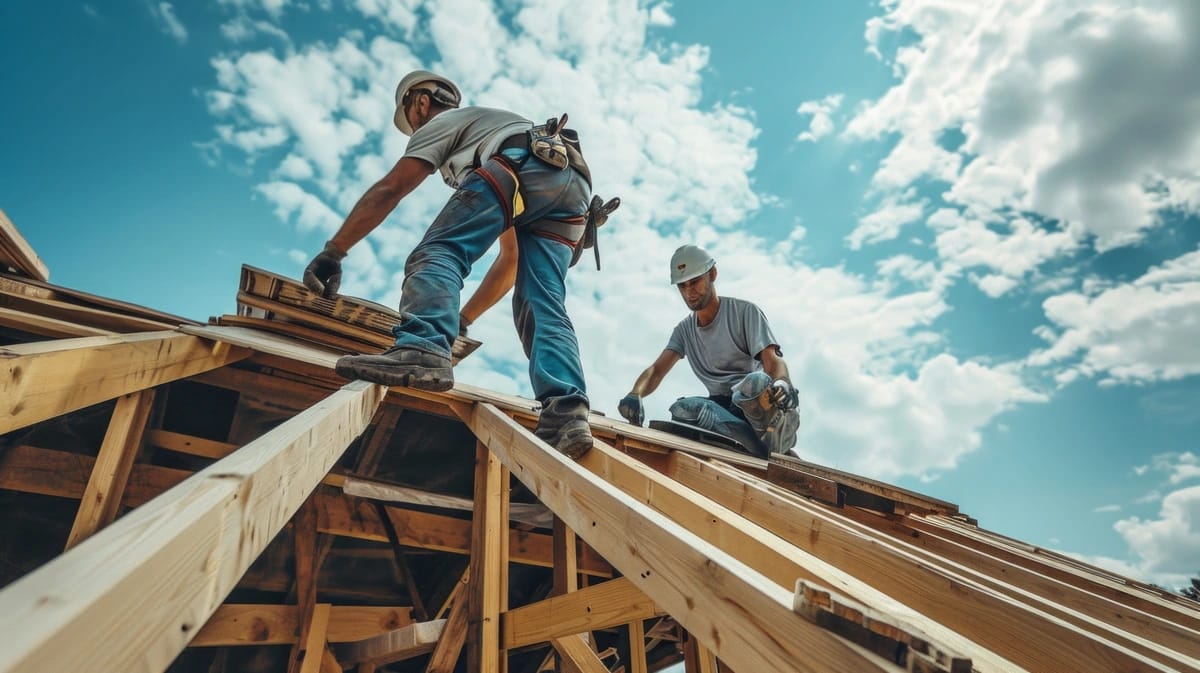Roof Repair Oahu: Quick and Affordable Roof Repairs Near You
Roof Repair Oahu: Quick and Affordable Roof Repairs Near You
Blog Article
Comprehending the Different Kinds of Roof Coverings: A Comprehensive Overview for Homeowners
With a selection of choices-- varying from the typical gable to the modern level-- each kind offers one-of-a-kind advantages and challenges that must line up with the home owner's ecological factors to consider and certain needs. As we explore the details of various roof types, it ends up being evident that one dimension does not fit all; the ideal option may amaze you.
Gable Roofing Systems
Gable roofs, identified by their triangular form, are among the most preferred roofing styles because of their simpleness and efficiency in losing water and snow. This style includes 2 sloping sides that satisfy at a ridge, permitting effective drain and decreasing the danger of water buildup. The high pitch generally connected with gable roofing systems improves their capability to deal with heavy precipitation, making them suitable for various climates.
Along with their practical advantages, gable roofs supply visual versatility. They can be adapted to numerous architectural styles, from conventional to contemporary homes. The design can additionally fit additional features such as dormer windows, which improve natural light and air flow in the attic room room.
Additionally, gable roofing systems provide sufficient area for insulation, adding to energy effectiveness. Home owners can select from a variety of roofing materials, including asphalt shingles, steel, and ceramic tiles, additionally boosting customization alternatives.
Despite their advantages, gable roof coverings may need additional support in locations susceptible to high winds or heavy snowfall. Overall, the saddleback roof remains a favored option because of its blend of capability, toughness, and aesthetic charm.
Flat Roofs
Flat roofing systems are frequently recognized for their minimalist design and useful applications, especially in business and industrial setups (oahu roofing). These roofs include a nearly straight or straight surface, which enables easy construction and versatile space utilization. While they may lack the visual allure of pitched roofing systems, level roof coverings provide various benefits, specifically in urban atmospheres where making the most of room is vital
Among the primary benefits of level roofs is their availability. Property owners can utilize the roofing system space for numerous purposes, such as roof yards, balconies, or solar panel setups. In addition, level roof coverings are normally more cost-efficient to keep and mount contrasted to their sloped counterparts, as they require fewer products and labor.
Typical products made use of for level roof coverings include built-up roofing (BUR), customized bitumen, and single-ply membranes, each offering distinct benefits. In general, level roofs serve as a functional and versatile option for several homeowners and organizations alike.
Hip Roof Coverings
Hip roofings are defined by their sloped sides that merge on top, developing a ridge. This style stands out from gable roofings, as all 4 sides of a hip roofing incline downwards towards the wall surfaces, providing a much more stable structure. The angle of the slopes can vary, enabling convenience in building visual appeals and functionality.
Among the key benefits of hip roof coverings is their ability to hold up against hefty winds and unfavorable climate condition. The sloped surfaces allow far better water drain, lowering the risk of leakages and water damages. Furthermore, hip roofings offer enhanced attic room space, which can be utilized for storage space and even exchanged comfortable areas.
Nevertheless, building a hip roof covering can be extra complicated and expensive than less complex roof kinds, such as gable roofing systems. The additional product and labor associated with producing the slopes and ensuring appropriate architectural integrity can result in higher costs. Despite these disadvantages, numerous homeowners favor hip roof coverings for their durability, aesthetic charm, and possibility for energy effectiveness.
Mansard Roofs
Mansard roofs, commonly acknowledged by their special four-sided layout, function two inclines on each side, with the lower incline being steeper than the upper. This architectural design, my explanation originating from France in the 17th century, is not just cosmetically enticing but functional, as it makes best use of the usable room in the upper floorings of a building. The steep reduced slope enables for even more clearance, making it an excellent option for loft spaces or attics, which can be exchanged living rooms.
Mansard roofings are defined by their flexibility, suiting different architectural styles, from typical to modern-day. They can be constructed with various products, consisting of asphalt tiles, slate, or steel, offering homeowners with a range of alternatives to suit their choices and spending plans. Furthermore, the style enables the integration of dormer home windows, improving natural light and air flow in the top levels.
Nonetheless, it is vital to think about the potential downsides. Mansard roofings might require even more upkeep as a result of the intricacy of their layout, and their high inclines can be challenging for snow and rain drainage. On the whole, mansard roofs incorporate elegance with usefulness, making them a prominent option among home owners seeking unique building features.
Shed Roofs
As house owners progressively look for simplicity and functionality in their building styles, dropped roofs have actually emerged as a prominent selection. Defined by a solitary sloping airplane, a shed roofing system presents a minimalist visual that matches different home designs, from modern to rustic.
Among the key advantages of a shed roofing system is its simple building, which typically translates to lower labor and material costs. This layout enables efficient water drain, lowering the danger of leaks and water damage. Additionally, the vertical incline supplies ample room for skylights, enhancing natural light within the inside.
Lost roofs additionally offer convenience in regards to usage. They can be effectively integrated right into enhancements, garages, or outdoor structures like pavilions and sheds. Additionally, this roof design can suit different roof covering materials, including steel, asphalt roof shingles, or perhaps eco-friendly roofs, lining up with environmentally friendly efforts.
Nonetheless, it is necessary to think about local environment problems, as hefty snow tons may necessitate modifications to the roofing's angle or framework. In general, shed roof coverings present a useful and visually pleasing choice for homeowners wanting to make best use of functionality without jeopardizing style.
Verdict


Gable roof coverings, identified by their triangular form, are among the most prominent roofing styles due to their simpleness and efficiency in dropping water and snow. oahu roofing. The steep pitch generally associated with gable roof coverings roofers oahu enhances their capacity to manage heavy precipitation, making them suitable for different climates
While they might do not have the aesthetic allure of pitched roof coverings, see this website flat roofings offer many advantages, especially in urban settings where optimizing room is vital.

Report this page